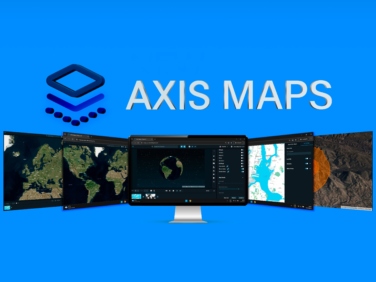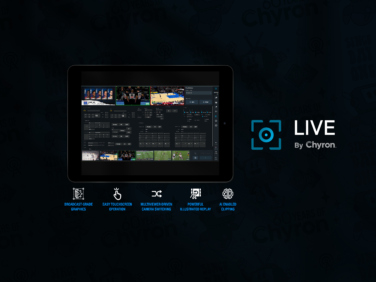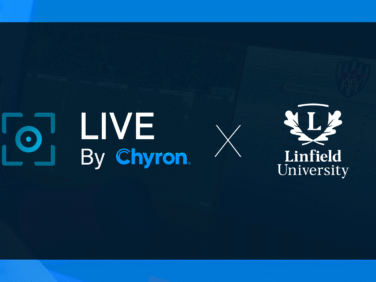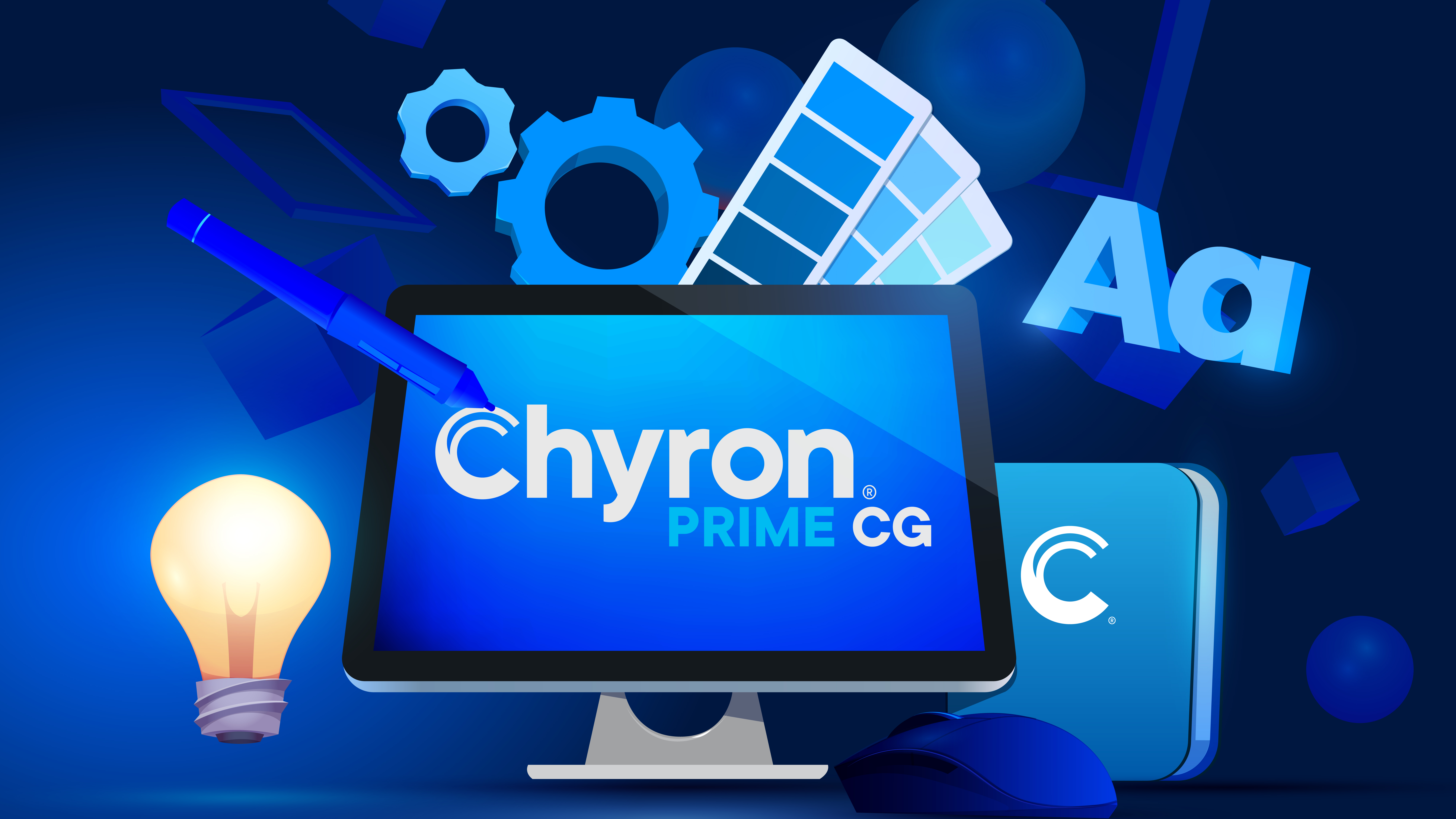
Hitting Regional Sports Out of the Park With OTT and DTC
MELVILLE, N.Y. — Sept. 21, 2022 —Broadcasters are facing increased demand to deliver content via over-the-top (OTT) rather than via traditional, linear over-the-air (OTA). This poses challenges for them, but it also opens opportunities. Content creators and original rights holders can also stand to benefit from the rise in OTT technologies and the lower cost of data transmission by leveraging OTT to broadcast their own content rather than selling the rights.
This blog will address the growing trend of broadcast in general to OTT and direct to consumer (DTC) delivery, then it will discuss what opportunities and challenges this presents in particular for regional sports. In the process, it’ll also give a broad overview with detailed information on potential workflows in live production. While live production is Chyron’s primary area, interested parties should understand the whole landscape and where this technology fits in.
How COVID-19 Accelerated the Growth of Broadband and the Decline of Everyone Else
While COVID-19 brought the rest of the world to a to a stand-still, it only accelerated the growth of broadband services. The most obvious reason, of course, is that consumers became wholly reliant on the internet during the global health crisis. Adrian Pennington writes for The Broadcast Bridge, “As broadband became a lifeline for work, school, entertainment, and more, many customers upgraded their packages to get higher speeds. This means that larger pipes are now available to deliver streaming services, and the capacity of the access network is less likely to be an issue.” [1] And as we know, when the network capacity increases, the expectations for higher quality will follow suit.
This brings us to the two other reasons for this acceleration, as outlined in CSI Magazine’s January 2022 supplemental report. First, the recent and sudden demand for OTT content pushed providers to offer their viewers more choice, forcing them to scrape up both new and legacy content. Additionally, the elasticity of the cloud gave it greater prominence over on-premises workflows as a viable technical solution, especially when live events were being cancelled due to health concerns but still required delivery costs.[2] So with more people at home looking for content to watch, and with less technologies being used on-prem, it was only a matter of time before distributors looked to streaming to secure revenue and reduce costs.
In fact, that interest in sports programming has waned significantly at the start of the pandemic. In March 2020, overall viewership for sports TV programming decreased 14%, with interest having continued to decline, according to an episode of the MiQ Insights Track podcast. As hosts Will Green and Robert Jones explain, this low viewership has made it much more difficult for advertisers to reach these very specific, engaged audiences, causing them to consider other content avenues.[3]
Now, more than two years into the pandemic, these hardships have impacted not just regional sports but also broadcast in general. NBC, CBS, and ABC — the “big three” broadcast networks — have long become household staples thanks to their minimum of three hours of primetime programming a night. Local stations in the U.S. have long relied on these networks to distribute entertainment, news, and advertising. In turn, the stations would fill up the remaining daytime slots with other media, such as talk shows.
However, competition first from cable and then from streaming-video has significantly declined audience viewership of broadcast. In fact, The Wall Street Journal reported in August 2022 that NBC has opened discussions about cutting back its 10 p.m. primetime hour in an effort to cut costs. Eliminating an hour of prime time each night to schedule could save the network tens of millions of dollars in content costs and give its affiliates extra time to program, thereby earning more ad revenue.[4]
Returning to sports federations and leagues, the option to bypass the traditional pay-TV operator and directly market their services to consumers instead has become increasingly prominent. This DTC model relies on seasonal consumer subscriptions for revenue rather than upfront payments from broadcasters, which are doled out on a typical multi-year basis. The NBA League Pass is a great example of this: The platform hybridizes the league’s broadcast deals with ESPN and Turner while allowing for live DTC feeds, including additional content like highlights, interviews, press conferences, magazine features, and match data analytics.
The idea with DTC is, as these sports groups scale the workload and tier the production value based on the audience, subscriptions, and advertising revenue, the cost of broadcasting these games will become more cost-effective. In this way, they can tier their production costs over time according to the audience generated for each broadcast. By selling key matchups to partner broadcasters and networks, they could broadcast their highest grossing games with more traditional, higher cost productions.
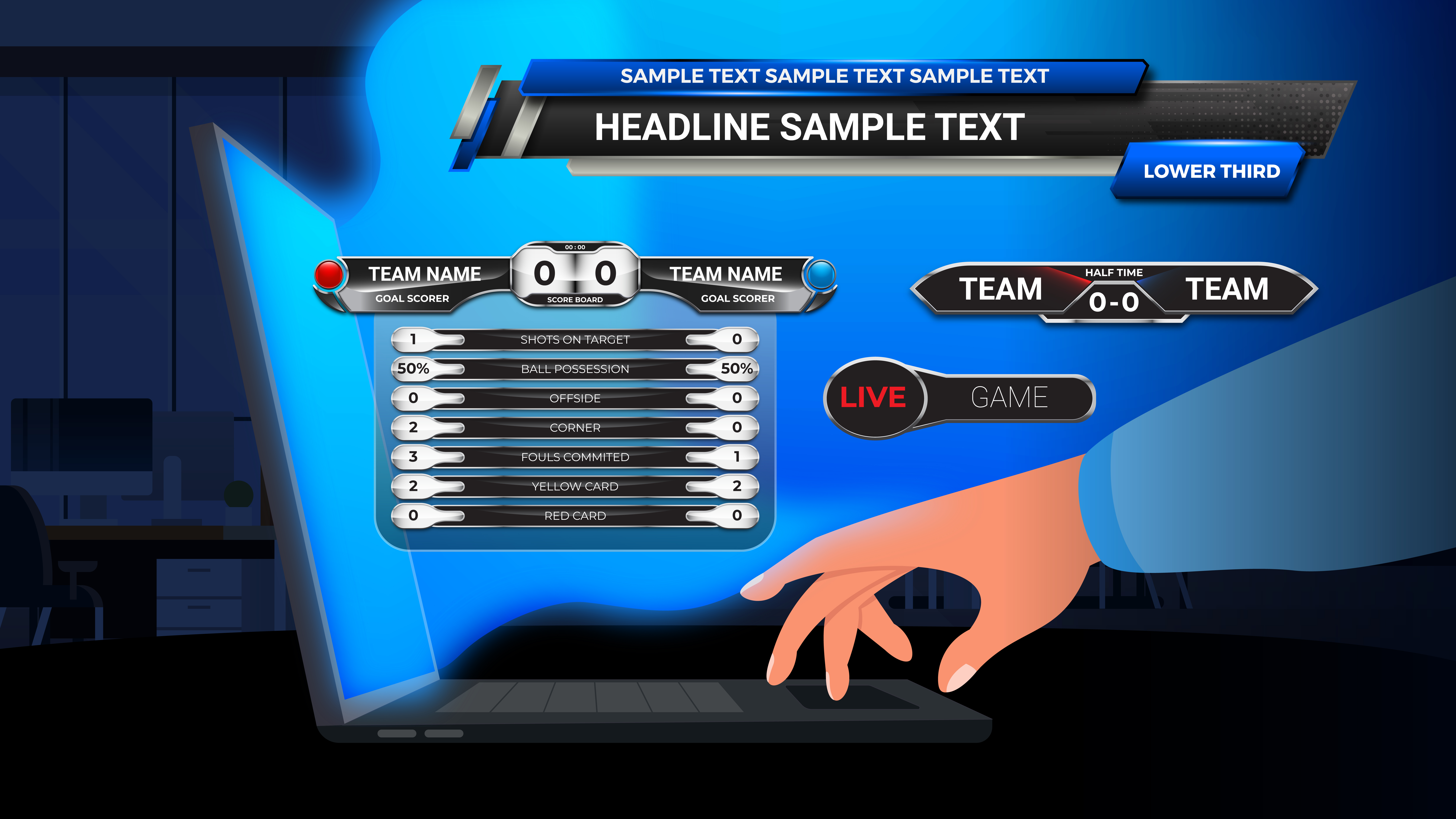
What Keeps Sports Groups From Moving Forward With OTT and DTC
While rights holders place a greater emphasis on DTC and OTT, many are hesitant to move. The transition to DTC will be relatively slow for a few reasons. For one, the newness of the DTC sports model means little guarantee for income and flat fees, which poses short-term risks to rights sellers. With time, the model will find a way to secure better ROI, but for the moment, launching a DTC offering independently rather than traditionally selling the media rights to OTT distributors makes for a shaky revenue stream.
With OTT, latency is an obvious issue. Watching a game on a broadband network opens the video feed to interruptions from social media, text messages, or other circumstances, and it can cause the feed to lag a minute or more behind what is happening in real time. This is not a problem found in traditional broadcast, a fact viewers will be reminded of when they are stuttering through their streaming experiences.
OTT/DTC platforms can also struggle with user authentication, payment and stream capacity. With millions of people watching an online sporting event at the same time, the streaming platform now needs to be scalable enough to handle all those users by having a complete workflow, scale priorities, and resilience to system failures.
Ultimately, the largest issues sports streaming can face might be the frustration it poses on consumers. In an op-ed for The Atlantic, Alex Kirshner discusses his disappointment with the new paradigm of sports streaming both in terms of access and financial expense. Although he admits that the traditional model of pay-TV bundles can also be expensive, he finds that the cost of watching all his favorite sports on different platforms adds up to nearly the same price of cable. In addition to the lack of a significant reduction in cost, the user also must keep track of where all the sports are being broadcasted, dealing with the confusion and frustration of finding the desired content. As Kirshner so aptly said, “The audience expects content to be accessible everywhere at all times and at a price point that makes sense.”[5]
How Sports Groups can Turn OTT and DTC Into an Overall Benefit
Sports streaming may bring with it many challenges, but there are also opportunities for rights owners looking to go into OTT/DTC delivery. For instance, content focusing on smaller, more niche sports or teams — like volleyball or wrestling — could bring in a unique and hungry audience. The streaming platforms could also promise a better VOD service than where these sports currently show online.
Streaming also presents more opportunities for engagement. Viewers are no longer keen just to sit in front of the television anymore, especially younger demographics who are statistically more interested in teams and players over the whole league. Keeping sports content to real-time viewing can hamper its overall growth, whereas taking more advantage of the opportunities for streaming can keep it alive. Interactive features like live betting, in-game trivia, and personal camera angles have already been implemented during the pandemic and continue to be successful. Other forms of gamification, such as gambling, can not only keep viewers interested both during and after matches, but they can also bring in more revenue through marketing and sponsorships, which can also find more integrated coverage during the broadcasts.
The opportunity to create content — both during and after the live games — has also exploded. Content ownership can become far more compelling, sitting squarely in the hands of the rights owner and being displayed more prominently on the viewing platform itself. Having documentaries, features, interviews, biopics, or other types of content can feed an already hungry audience and drive more engagement with favorite teams and players.
Overall, the ability to scale productions up or down has also made streaming sports more cost efficient. If a matchup or a league generates only a small audience, the production can scale to a single camera for live streaming, thereby saving costs. Conversely, for larger scale productions, the entire workflow of the feed can be branded to give it all a consistent look and feel. Not only that, but production values can be tiered to match the audience, subscription, and advertising revenue, allowing the platform to recommend content more intelligently to viewers and giving the rights owners the ability to sell these key matchups to partner broadcasters and networks.
Conclusion
The growth of OTT sports distribution platforms is easy to understand: The streaming of native content enables the personalization of content; video streams make it easier to insert targeted advertising than broadcasts; and all parties can benefit from tapping into these new and more lucrative revenue streams, whether it is rights owners directly monetizing their content, OTT distributors like TV channels, or telcos and cable operators. If sports organizations and broadcasters look at D2C OTT models as immense opportunities, not as impending doom and loss of rights revenues, they will see the future of sports production methods as an immense opportunity.
So, how can you get the most out of sports streaming?
For simplified, low-cost production, acloudnativeplatform with switching, graphics and illustrated replay capabilities is an excellent choice. A good platform can make it feel like you are working in a physical control room, with multiple cameras, controls, and stations at your team’s disposal. The team can work from anywhere, increasing efficiency while also lowering the cost of on-site work, and content can publish online without delay. Additionally, you can also provide viewers with more dynamic, energetic coverage of the sporting events by connecting to various, unique viewpoints over the cloud network. You may want to leverage a simple interface, usable by a single operator, or offer a remote team the ability to work concurrently.
Just as a key advantage of OTT is flexible delivery, flexible production is important too. Rather than a fixed control room with dedicated hardware, software–basedfunctionality for graphics and switching, along with telestration and replay makes it more efficient to adapt to any live production. Manage and deploy real-time graphics that viewers can control via interactive touchpoints, powering interactivity across your OTT channels, streaming content, online digital platforms, and mobile applications. Software-based functionality can help you present audiences with broadcast-grade graphics that react intelligently and fluidly to touch gestures and mouse clicks, empowering them to curate the data they care about in-stream without having to divert attention to a second screen. These interactive graphics also present unprecedented return-on-investment opportunities for web and OTT channels, able to drive clickthrough conversion directly in-stream.
Admittedly, there will inevitably be contraction at the top of the sports broadcast industry. Although there are still challenges to overcome, sports content itself has a great chance of expanding and capturing new, aggregated, and diversified audiences. Broadcasters will then get into the OTT game through technology provision and revenue-sharing deals with upside for both sports and broadcasters. As a result, both sides are more likely to pull their weight and produce and market quality content.
[1]UntappingthePotentialofSportsDTC, Adrian Pennington, The Broadcast Bridge, November 2021
[2]TheEvolutionofLiveSports, CSI Magazine, January 2022
[3]AdaptingTVTacticsforCOVID-19 Part 2: ChangingHabitsandOTT, MiQ
[4]NBCConsidersCuttingBackProgrammingHoursinPrimeTime, Joe Flint, Wall Street Journal, August 2022
[5]SportsStreamingMakesLosersofUsAll, Alex Kirshner, The Atlantic, August 2022
